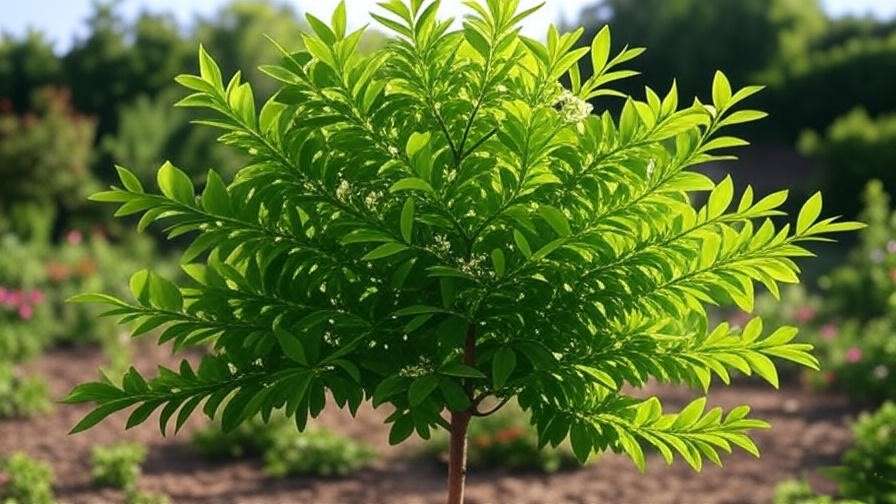Imagine stepping into your garden or kitchen and plucking fresh, aromatic curry leaves to elevate your homemade dishes with authentic flavor! 🌿 The curry leaf tree (Murraya koenigii), a staple in Indian cuisine and a gem for plant enthusiasts, is easier to grow at home than you might think. Yet, many gardeners struggle with its specific care needs, from proper planting to pest control. This comprehensive guide, crafted with insights from horticultural experts, will walk you through every step to ensure your curry leaf tree thrives, whether in a sunny backyard or a cozy indoor pot. From propagation to harvesting, we’ve got you covered with actionable tips to solve common problems and grow a lush, productive plant. Let’s dive in and transform your green space! 🍛
1. Understanding the Curry Leaf Tree 🌿
1.1 What Is a Curry Leaf Tree?
The curry leaf tree, scientifically known as Murraya koenigii, is a small evergreen tree or shrub native to India and Sri Lanka. Belonging to the Rutaceae family (the same as citrus plants), it’s prized for its fragrant, pinnate leaves that add a distinctive, nutty flavor to culinary dishes. The tree typically grows 6–20 feet tall in its natural habitat but can be maintained smaller in pots for home gardens. Its delicate white flowers bloom in clusters, followed by small, inedible black berries. Beyond its culinary uses, the curry leaf tree is valued for its ornamental appeal, with glossy green foliage that enhances any garden or indoor space.
1.2 Benefits of Growing a Curry Leaf Tree at Home
Why grow a curry leaf tree? Here are some compelling reasons:
- Culinary Excellence 🍲: Fresh curry leaves impart a robust, authentic flavor to curries, chutneys, and tempering oils, far surpassing dried leaves from stores.
- Health Benefits: Curry leaves are rich in antioxidants, with anti-inflammatory and digestive properties, as noted in studies published by the Journal of Ethnopharmacology.
- Aesthetic Appeal: Its lush foliage makes it a stunning addition to gardens, patios, or indoor spaces.
- Sustainability: Growing your own reduces reliance on packaged herbs, supporting eco-friendly living.
Expert Insight: Chef Priya Sharma, a South Indian cuisine specialist, says, “Fresh curry leaves are a game-changer in the kitchen. Their aroma and flavor are unmatched, making homegrown trees a must for food lovers.”
2. Getting Started: Choosing and Planting Your Curry Leaf Tree 🌱
2.1 Selecting the Right Curry Leaf Tree
Choosing a healthy curry leaf tree is the first step to success. Here’s what to consider:
- Seeds vs. Saplings: Seeds are affordable but slow to germinate (2–3 months). Saplings or young plants offer faster results and are ideal for beginners.
- Where to Buy: Purchase from reputable nurseries or online suppliers like Logee’s or PlantVine. Check reviews to ensure plant quality and avoid weak specimens.
- Varieties: Standard curry leaf trees grow taller, while dwarf varieties (3–5 feet) are perfect for small spaces or containers.
Tip: Inspect saplings for vibrant green leaves and no signs of pests or yellowing.
2.2 Ideal Growing Conditions
Curry leaf trees thrive in specific conditions. Here’s a breakdown:
- Climate (H3): These tropical/subtropical plants prefer USDA zones 9–11. In cooler climates, grow them indoors or in greenhouses to mimic warm conditions (60–80°F).
- Soil (H3): Use well-draining, loamy soil with a slightly acidic pH (6.0–7.0). A mix of potting soil, sand, and compost works well.
- Light (H3): Full sun (6–8 hours daily) is ideal. Indoors, place near a south-facing window or use grow lights.
- Water (H3): Keep soil consistently moist but not waterlogged. Overwatering is a common mistake that leads to root rot.
2.3 Planting Your Curry Leaf Tree
Follow these steps for successful planting:
- Choose a Pot or Location: For containers, select a 12–15-inch pot with drainage holes. For ground planting, pick a sunny spot with good drainage.
- Prepare the Soil: Mix potting soil with 20% sand and 10% compost for optimal drainage and nutrients.
- Planting: Place the sapling’s root ball at soil level, cover with soil, and press gently. Water thoroughly.
- Timing: Plant in spring or early summer for the best growth.
| Planting Type | Pot Size | Light Needs | Best For |
| Indoor | 12–15 inches | Bright indirect or grow light | Small spaces, apartments |
| Outdoor | 15–20 inches or ground | Full sun | Gardens, warm climates |

Tip: Add a layer of mulch to outdoor plants to retain moisture and regulate soil temperature.
3. Essential Care Tips for a Healthy Curry Leaf Tree 🌳
3.1 Watering Needs
Proper watering is critical for curry leaf trees:
- Frequency: Water when the top inch of soil feels dry—typically every 3–5 days in warm weather, less in winter.
- Avoid Overwatering: Soggy soil leads to root rot. Ensure pots have drainage holes.
- Seasonal Adjustments: Reduce watering in cooler months or for indoor plants with less light exposure.
Sign of Overwatering: Yellowing leaves or a musty soil smell. If noticed, reduce watering and improve drainage.
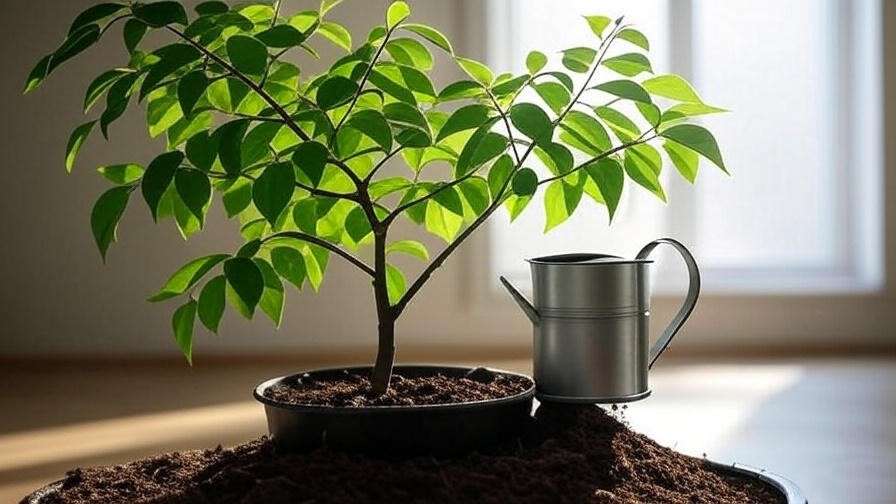
3.2 Fertilizing for Optimal Growth
Fertilizing supports vigorous growth and leaf production:
- Best Fertilizers: Use organic compost, a balanced NPK (10-10-10), or citrus-specific fertilizers.
- Schedule: Apply monthly during the growing season (spring–summer). Avoid fertilizing in winter.
- Common Mistakes: Over-fertilizing can burn roots, causing leaf drop. Always dilute liquid fertilizers to half-strength.
Expert Insight: According to a 2023 study from the University of Florida’s Horticultural Department, consistent fertilization with micronutrients like iron boosts curry leaf tree vigor.
3.3 Pruning and Maintenance
Regular pruning keeps your tree healthy and productive:
- Why Prune: Encourages bushy growth, removes dead or damaged leaves, and improves air circulation.
- How-to:
- Use clean, sharp shears.
- Trim back leggy branches by 1/3 in early spring.
- Remove yellow or damaged leaves regularly.
- Leaf Cleaning: Wipe leaves with a damp cloth to remove dust and enhance photosynthesis.
Tip: Prune just above a leaf node to stimulate new growth.
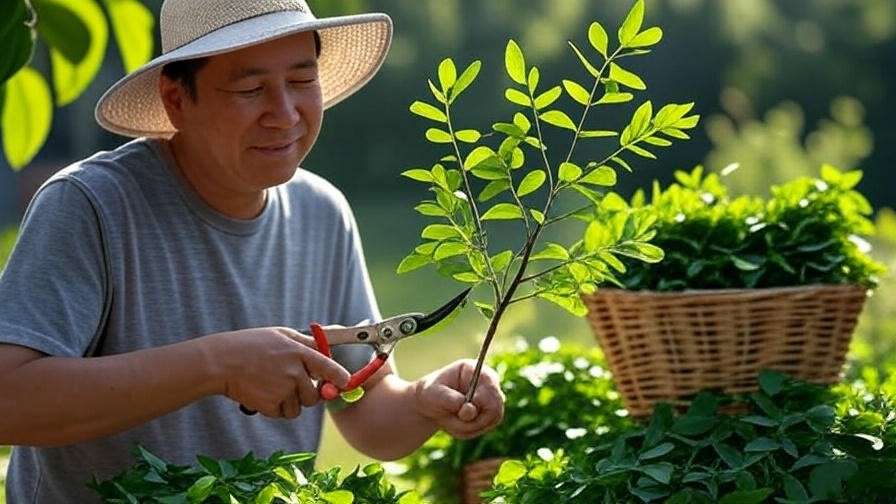
4. Common Challenges and Solutions 🐛
4.1 Pests and Diseases
Curry leaf trees are relatively hardy but can face pest and disease issues:
- Common Pests:
- Aphids: Small green insects sucking sap. Treat with neem oil or insecticidal soap.
- Spider Mites: Tiny red pests causing webbing. Increase humidity and spray with water.
- Scale Insects: Hard, brown bumps on stems. Scrape off and apply horticultural oil.
- Diseases:
- Root Rot: Caused by overwatering. Improve drainage and reduce watering.
- Leaf Spot: Fungal infection from high humidity. Remove affected leaves and apply a fungicide.
Prevention: Regularly inspect plants and maintain good air circulation.
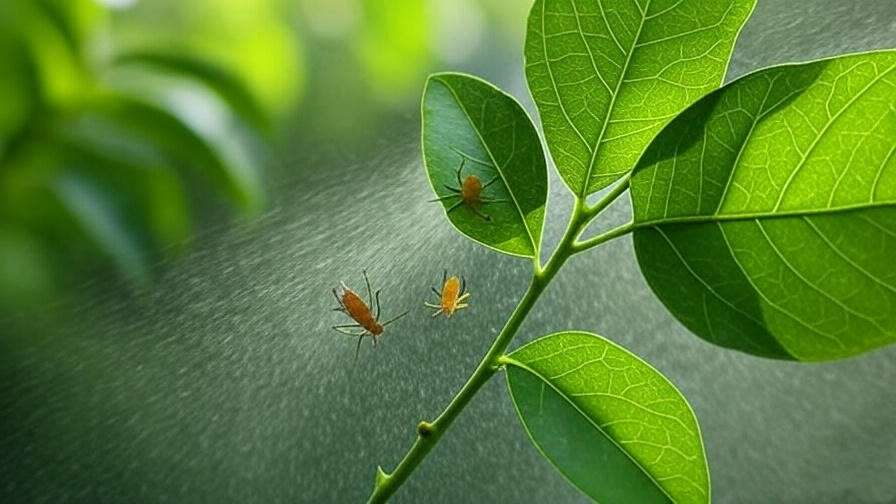
4.2 Environmental Stressors
Address these common issues to keep your tree thriving:
- Yellowing Leaves: Often due to overwatering, nutrient deficiency (iron or nitrogen), or insufficient light. Test soil pH and adjust care.
- Slow Growth: Check for inadequate sunlight or poor soil quality. Repot every 2–3 years to refresh nutrients.
- Winter Care: In cold climates, move potted trees indoors or cover outdoor trees with frost cloth.
| Issue | Cause | Solution |
| Yellowing Leaves | Overwatering, low light | Adjust watering, move to sunnier spot |
| Slow Growth | Poor soil, insufficient light | Fertilize, ensure 6–8 hours of sun |
| Pest Infestation | Aphids, spider mites | Apply neem oil, increase humidity |
5. Harvesting and Using Curry Leaves 🍲
5.1 When and How to Harvest
Harvesting correctly ensures a steady supply of leaves:
- Best Time: Pick leaves in the morning when they’re freshest.
- Technique: Pinch or cut mature, dark green leaves, leaving young shoots to grow. Use scissors for precision.
- How Much: Avoid harvesting more than 1/3 of the plant at once, especially for young trees.
Tip: Regular harvesting encourages bushier growth.
5.2 Culinary Uses of Curry Leaves
Curry leaves are a culinary treasure:
- Popular Dishes: Add to curries, dals, chutneys, or tempering oils (tadka) for South Indian dishes.
- Storage:
- Fresh: Store in a zip-lock bag in the fridge for up to 2 weeks.
- Dried: Dry in a shaded, airy spot and store in an airtight container.
- Frozen: Freeze whole leaves for up to 6 months.
- Recipe Idea: Curry Leaf Tadka
- Heat 2 tbsp oil, add 1 tsp mustard seeds, 10–15 fresh curry leaves, and 1 dried red chili. Sizzle for 30 seconds and pour over cooked dal or rice.
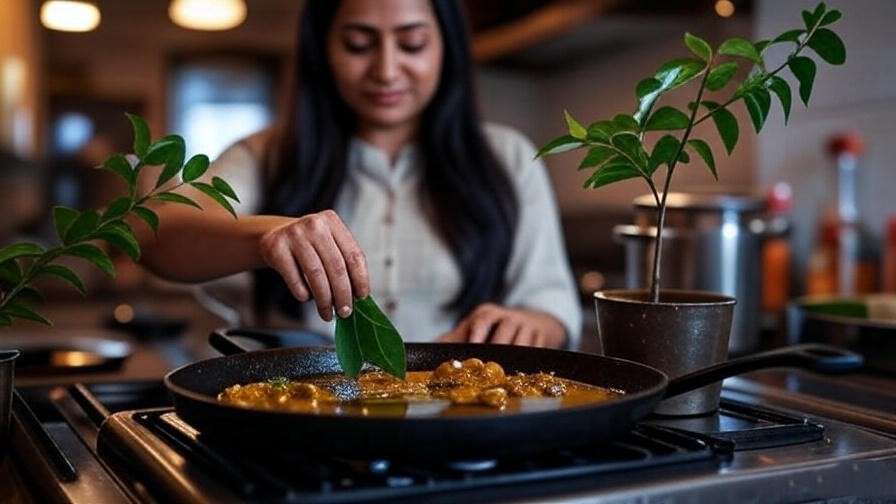
5.3 Non-Culinary Uses
Beyond the kitchen, curry leaves offer additional benefits:
- Medicinal: Used in Ayurveda for digestive health and hair care. A 2022 study in the Journal of Ayurvedic Medicine highlights their antioxidant properties.
- Ornamental: The tree’s glossy foliage and compact size make it ideal for patios or indoor decor.
Example: Boil curry leaves in water for a hair rinse to reduce dandruff, as recommended in traditional practices.
6. Advanced Tips for Thriving Curry Leaf Trees 🌟
6.1 Propagation Techniques
Propagating your curry leaf tree allows you to expand your collection or share plants with others. Here are two reliable methods:
- Growing from Seeds (H3):
- Source Seeds: Use fresh seeds from ripe berries (not dried seeds from spice racks, as they rarely germinate). Soak seeds in warm water for 24 hours to soften the outer layer.
- Planting: Sow seeds ½ inch deep in a seed-starting mix. Keep soil moist and place it in a warm spot (70–80°F).
- Germination: Expect sprouts in 2–3 months. Thin seedlings to the strongest one per pot.
- Success Rate: Low (30–40%) due to slow germination and seed viability.
- Stem Cuttings (H3):
- Select a Cutting: Choose a healthy, 4–6-inch semi-hardwood stem with 3–4 leaf nodes.
- Prepare: Remove lower leaves, dip the cut end in rooting hormone, and plant in a mix of sand and potting soil.
- Care: Cover with a plastic bag to maintain humidity and place in bright, indirect light. Roots form in 4–6 weeks.
- Success Rate: Higher (60–80%) with proper care.
Expert Insight: Dr. Anjali Rao, a botanist specializing in tropical plants, notes, “Stem cuttings are the preferred method for curry leaf trees, as they produce genetically identical plants and establish faster than seeds.”
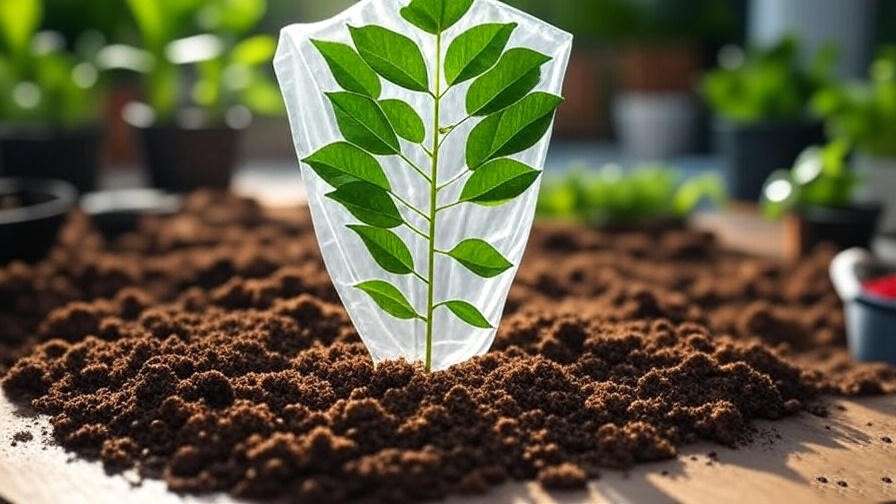
6.2 Boosting Leaf Production
Maximize your tree’s leaf output with these advanced techniques:
- Training for Bushier Growth: Pinch the tips of young branches regularly to encourage lateral growth. This creates a fuller, more productive tree.
- Companion Planting: Plant marigolds or basil nearby to deter pests like aphids naturally.
- Organic Growth Enhancers: Apply compost tea or diluted seaweed extract every 6–8 weeks during the growing season to boost nutrient uptake.
Tip: Rotate potted trees every few weeks to ensure even light exposure, promoting balanced growth.
7. FAQs About Curry Leaf Tree Care ❓
Here are answers to common questions to address reader concerns and boost SEO:
- How long does it take for a curry leaf tree to produce leaves?
Saplings produce usable leaves within 6–12 months, while seed-grown trees may take 1–2 years. Regular pruning and fertilization speed up production. - Can curry leaf trees survive winter indoors?
Yes, place them near a south-facing window or under grow lights, maintaining temperatures above 50°F. Reduce watering in winter to prevent root rot. - Why are my curry leaves turning yellow?
Yellowing is often caused by overwatering, nutrient deficiency (especially iron), or insufficient light. Test soil pH, adjust watering, and ensure 6–8 hours of sunlight. - How often should I repot my curry leaf tree?
Repot every 2–3 years or when roots become pot-bound. Choose a pot 2–3 inches larger in diameter and refresh with nutrient-rich soil. - Are curry leaf tree berries edible?
No, the berries are inedible and mildly toxic. Only the leaves are safe for culinary use.
8. Conclusion
Growing a thriving curry leaf tree at home is a rewarding journey that brings fresh, aromatic flavor to your kitchen and beauty to your space. 🌿 By choosing the right plant, providing optimal growing conditions, and following expert care tips—like proper watering, fertilizing, and pruning—you can overcome common challenges and enjoy a productive tree for years. From tackling pests to mastering propagation, this guide equips you with everything you need to succeed. Start your curry leaf tree adventure today, experiment with a tadka recipe, or share your progress in the comments below! For more plant care insights, explore our guides on indoor gardening or organic pest control. 🍛

